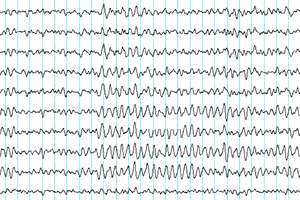Recently I blogged about a conversation with my doctor that I managed badly. I called her asking for a drug rather than asking for a brain diagnosis and options.
The next conversation was with a neurologist and I did better.
My GP convinced me to consult with a neurologist because of a series of brain events. Last summer I had a bout of transient global amnesia (TGA). For about 4 hours I knew who I was, but I wasn’t sure where I was and I knew I didn’t know what I was supposed to do. I ended up in the hospital overnight receiving every test known to Grey’s Anatomy: EKG, X-ray, blood analysis, EEG, MRI, you name it. I was fine. TGA is a diagnosis of exclusion — when they can’t figure it out, they call it that.
Two weeks ago I had vertigo, which was when I called my doctor asking for an antibiotic. She rightly refused. Based on my recent history, my doctor was concerned that this was part of a “larger picture,” she said euphemistically. I didn’t like the idea of a “larger picture” as it seemed it might include inconvenient things like brain seizures and epilepsy and other things I’d rather not consider.
I’ve always been a little spacey. I tend to lose my keys and forget appointments. So I have a bowl by the door that my keys always go to and a smart phone that alerts me to events on my calendar. I manage as do so many of my fellow space cadets.
But with TGA on my record and now vertigo, the spaciness appeared more ominous. My doctor encouraged to me revisit the neurologist who diagnosed the TGA.

He suspected small seizures that might have been occurring for years, based on the length of time I’ve had symptoms. He prescribed a 48-hour EEG to measure brain activity. I’d had an EEG in the hospital the summer before, but it was a standard 30-minute EEG which had not shown any problems. The doctor readily admitted that the length of time and timing was arbitrary. For some people, waves of seizures sometimes happen every 3 to 4 hours. In others they might occur after or during sleeping. But having the EEG recording for 48 hours would create many more opportunities to find problems. Since the episodes I’d had were unpredictable, this EEG was a very expensive shot in the dark. And that’s when I had “the conversation.”
I asked him what were the possible outcomes. “Let’s go over that when we get the results,” he stalled.
I was very concerned about my care cascading from a test, to a med, to an operation…my imagination went wild. I felt strongly that this was the time to set boundaries so that I remained the decision maker.
I listed the possible outcomes to him: “As I see it, A, we find nothing; B, we find minor somethings that have been there a long time; or C, we find a significant problem.” He nodded and I added, “If it’s A, then we do nothing, right?”
“Yes.”
“No more tests, nothing?”
The doctor said, “Yes. If it’s B, that would mean we find small seizures. Don’t worry, we have medicines that will take care of that.”
That’s exactly what I was worried about. I didn’t want to take a medicine to “fix” a problem that was barely impacting my life.
I said, “No, if it’s small seizures that I’ve been having all along, then I don’t see any reason to take medicine. I’ve always been this way, it’s the way I am. I don’t want to be on drugs the rest of my life. I don’t want the side effects or possible interactions. You have to agree to that before I agree to take this EEG.”
He agreed. Then we both agreed if it was C, then we’d figure it out from there.
The test itself, called an ambulatory EEG, was a much bigger deal than I had been told. The approximately 25 electrodes that were glued to my head didn’t “hide under a full head of hair” as the info sheet claimed. The tech put a fishnet cap on my head to help secure them in place. The wires from each electrode were gathered and pulled out the hole of the cap on top, like an “I Dream of Jeannie” ponytail. They were tied together in a thick bundle and snaked down my back and under my arm into a black box recorder. I put a baseball cap over the white net.
I couldn’t “go about my day normally.” No computer and no cell phone near my head. The electrodes pick up electricity from my head, but other sources would override the readings. No exercise because no sweating. No shower.
For 48 hours I wore the electrodes and box. I could use a speaker phone, read printed material and watch TV. It was hard to continue to pretend this wasn’t a big deal and that I wasn’t worried.
The test went smoothly and I got the results yesterday – I am certified “completely normal.” To be honest, my neurologist sounded pretty unhappy. Doctors like to put labels on things and my brain was defying the label. My husband, as husbands do, happily took issue with the idea that I am completely normal. I’m back on the computer and chatting away on the phone. No medicines, no seizures. But I now have more confidence that I can manage my health care and make the decisions that are right for me.






